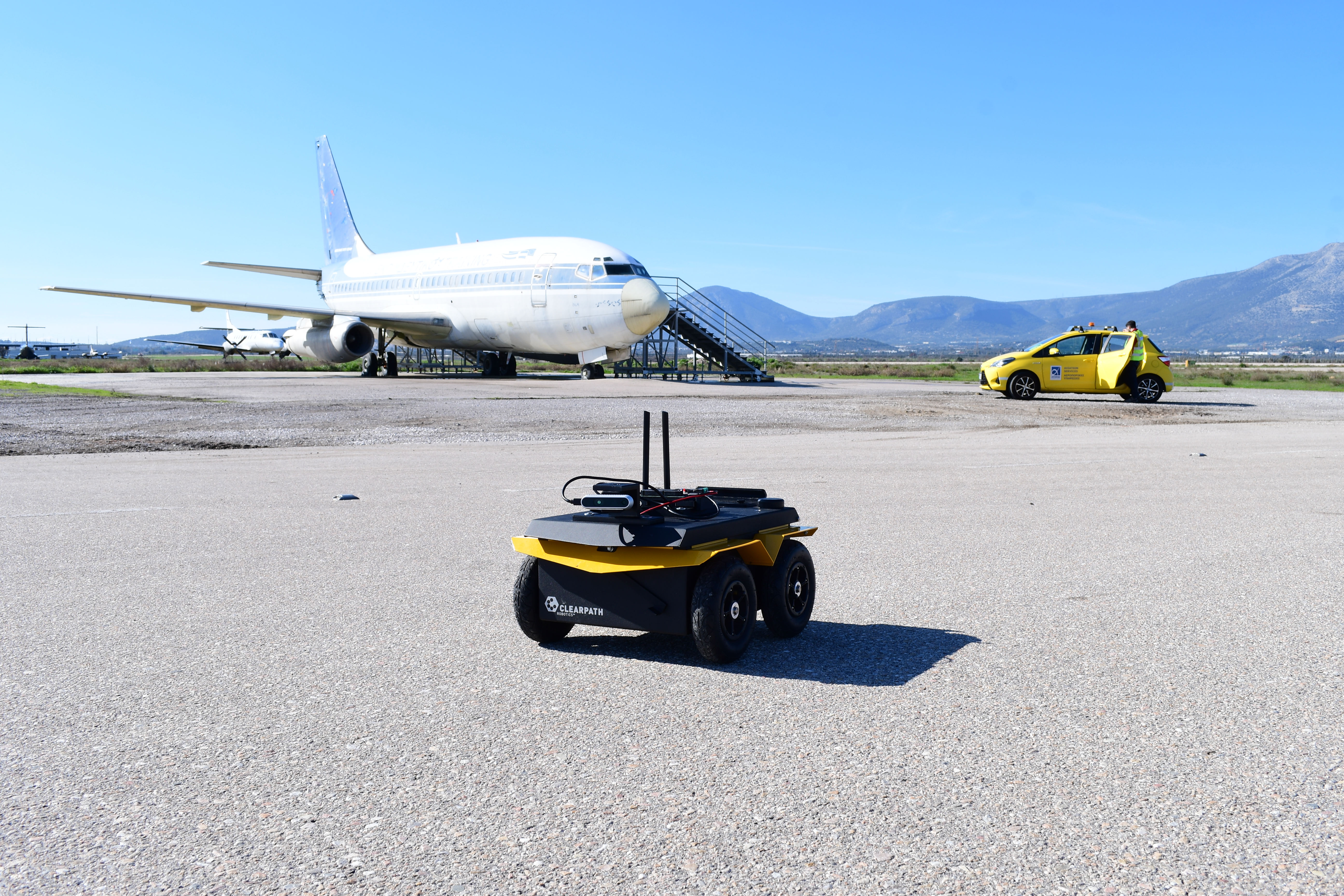UC2 - Proactive Public Infrastructure Assets Management
This use case offers a solution to improve the management and maintenance of infrastructure assets in Athens International Airport and DAEM’s public infrastructure in Athens. The solution utilizes advanced technologies such as Artificial Intelligence (AI)-powered algorithms and unmanned vehicles to enhance the effectiveness of data collection and assessment of infrastructure assets. AI techniques will analyze data from multiple sources to evaluate infrastructure assets, generate alerts and recommendations for maintenance tasks, and improve worker safety, while unmanned vehicles will assist with the necessary maintenance operations. Augmented Reality (AR) will be used to provide on-site views of assets’ blueprints and live communications with remote experts. In addition, Digital Twins (DT) of public construction sites will be created, allowing for validation of technical plans and real-time monitoring.
Trial
On January 23 & 30, 2025, the WINGS ICT Solutions team, along with AIA staff, conducted a trial at the testing facilities of Athens International Airport. The objective was to inspect and analyze road conditions while evaluating how 5G connectivity enhances real-time infrastructure monitoring.

Key Technologies Used
A remotely operated autonomous vehicle was used to scan roads, detect damages, and assess their severity. Equipped with high-resolution cameras and sensors, the vehicle provided real-time visual and depth data, enabling detailed infrastructure analysis.
At the core of the solution is the WINGS Wi.MOVE platform, which utilises video analytics to:
- Identify infrastructure faults such as cracks and potholes
- Estimate the severity of each damage for maintenance works scheduling
- Recommend corrective interventions to optimize maintenance efforts
To ensure effective decision-making, all collected real-time data, camera feeds and the output of the analysis were displayed on the wi.MOVE interactive visualization dashboard. This provided a comprehensive overview of infrastructure conditions, helping operators monitor faults remotely, assess severity levels, and plan maintenance interventions more efficiently.
Key Outcomes & Next Steps
The trial demonstrated the potential of AI-driven predictive maintenance, allowing for early detection of infrastructure defects and more efficient, cost-effective repairs.
Network KPIs were collected and KVIs related to security, trustworthiness, and resilience were assessed, confirming the solution’s reliability and highlighting areas for further refinement. The insights gained will contribute to the continuous improvement of the system, ensuring even greater efficiency and resilience in future implementations.
The recorded data is currently under analysis, with findings expected to enhance the system’s capabilities and support broader deployment in urban infrastructure management.
With this initiative, WINGS ICT Solutions, AIA and TrialsNet are driving smart infrastructure innovation, ensuring safer and more sustainable cities through advanced technology and automation.
